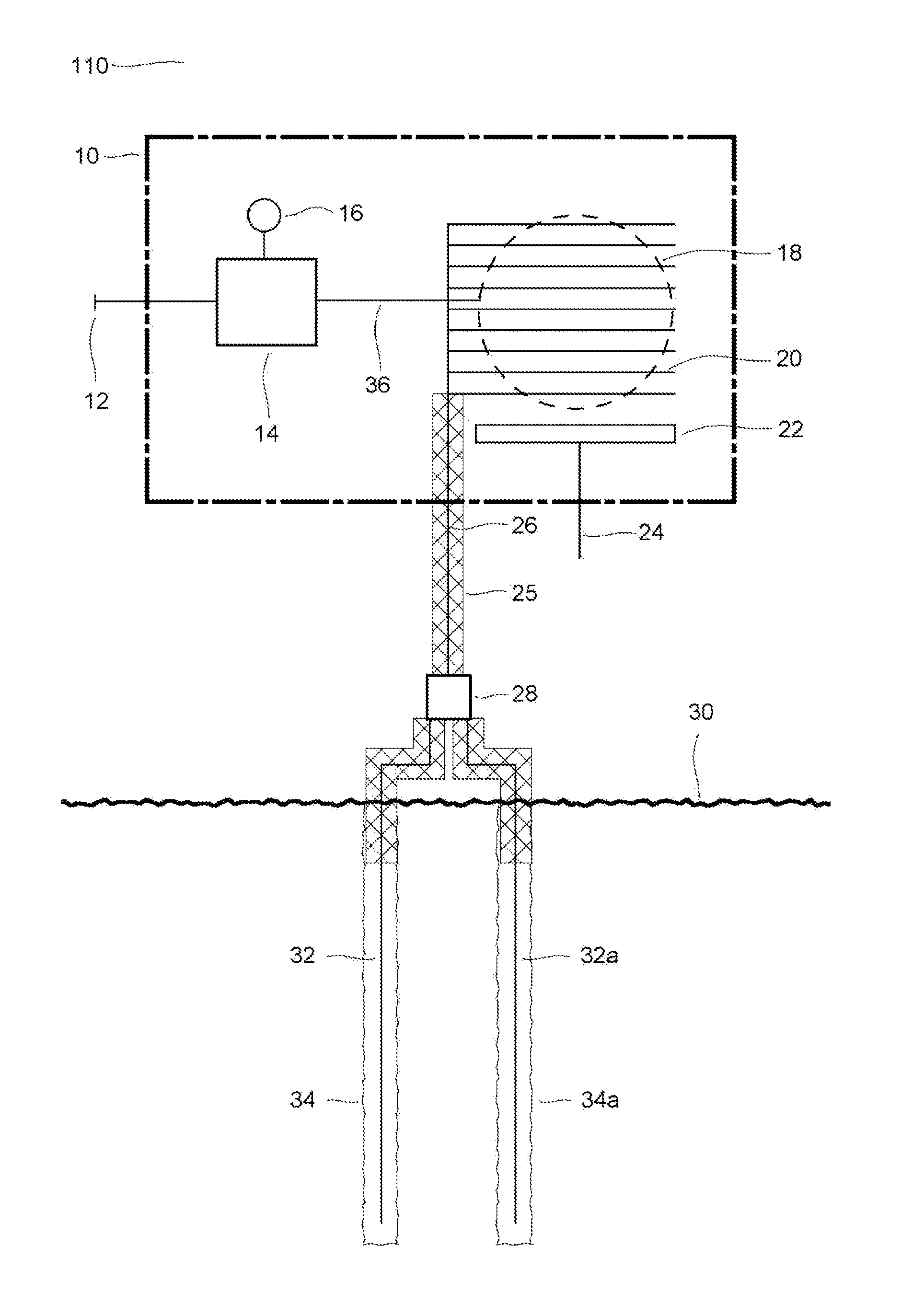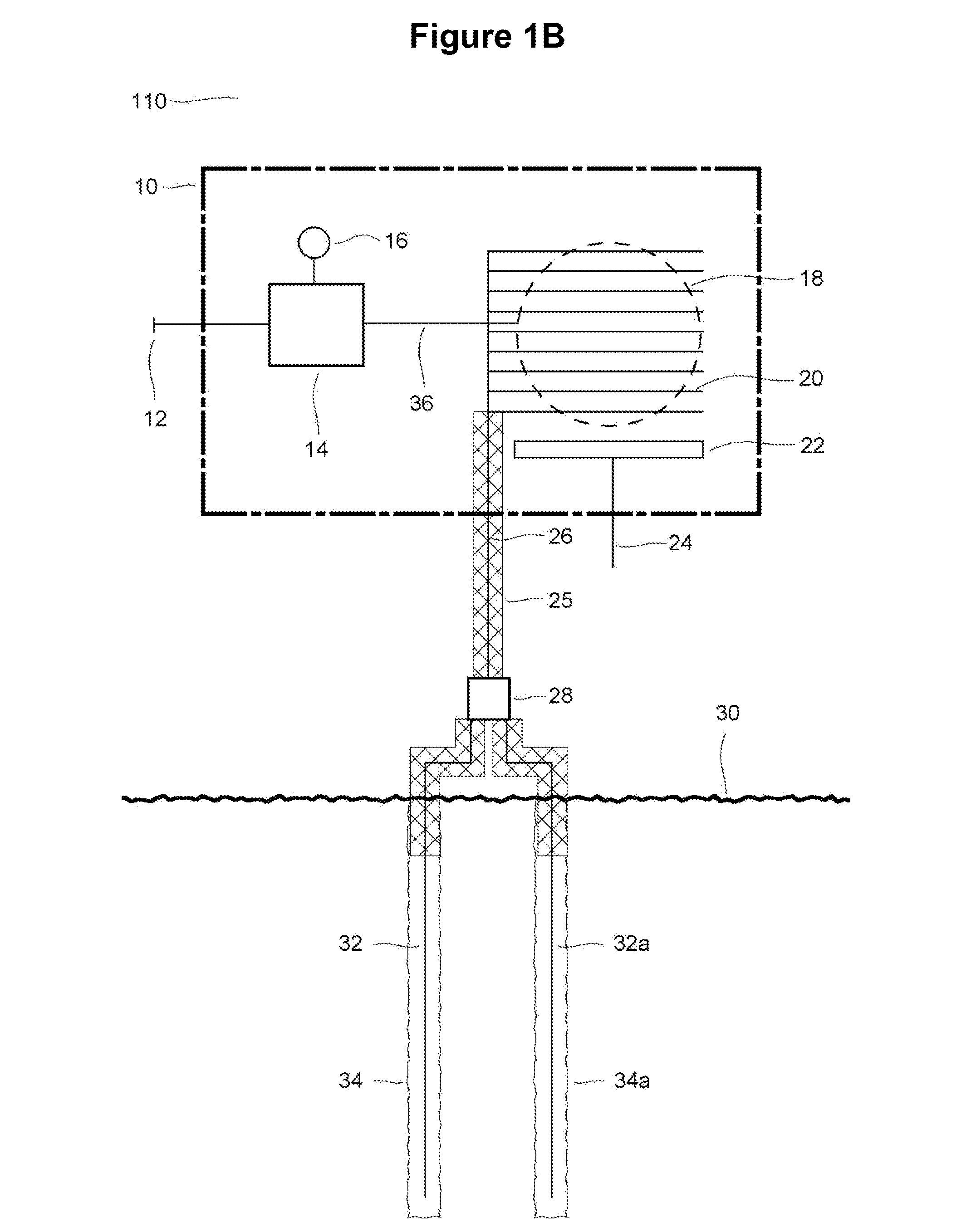Geothermal Cooling Device
a cooling device and geothermal technology, applied in the field of geothermal cooling systems, can solve the problems of high capital and installation costs, low adoption rate in the commercial marketplace, and relatively high cost, and achieve the effect of efficient cooling an indoor spa
- Summary
- Abstract
- Description
- Claims
- Application Information
AI Technical Summary
Benefits of technology
Problems solved by technology
Method used
Image
Examples
Embodiment Construction
)
[0026] With reference to the drawings, new and improved cooling devices and systems for improved cooling embodying the principles and concepts of the present invention will be described. In particular, the devices and systems are operable in the conditions where an earth source temperature is lower than an above ground temperature associated with an interior space to be cooled. The earth source may alternatively be a ground source or a body of water effectively below ground level.
[0027] Recent advances in thermal superconducting materials can now be considered for use in novel energy transfer applications. For example, U.S. Pat. No. 6,132,823 and continuations thereof, discloses an example of a heat transfer medium with extremely high thermal conductivity, and is included herein by reference. Specifically the following disclosure indicates the orders of magnitude improvement in thermal conduction; “Experimentation has shown that a steel conduit 4 with medium 6 properly disposed th...
PUM
 Login to View More
Login to View More Abstract
Description
Claims
Application Information
 Login to View More
Login to View More - R&D
- Intellectual Property
- Life Sciences
- Materials
- Tech Scout
- Unparalleled Data Quality
- Higher Quality Content
- 60% Fewer Hallucinations
Browse by: Latest US Patents, China's latest patents, Technical Efficacy Thesaurus, Application Domain, Technology Topic, Popular Technical Reports.
© 2025 PatSnap. All rights reserved.Legal|Privacy policy|Modern Slavery Act Transparency Statement|Sitemap|About US| Contact US: help@patsnap.com



